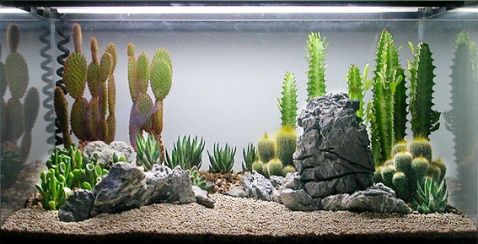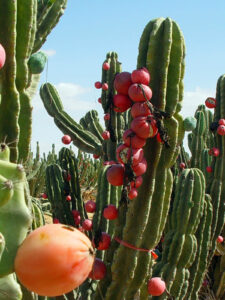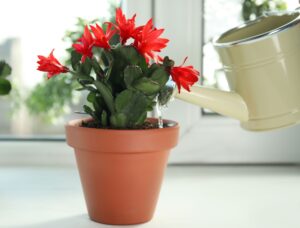Creating a fish tank succulent terrarium is akin to weaving a vibrant tapestry of life, where lush greenery meets the tranquil essence of aquatic beauty. This unique fusion results in an enchanting ecosystem that not only captivates the eye but also nurtures the soul. As an expression of creativity, this dual habitat invites individuals to explore the delicate balance between land and water, fostering a profound appreciation for botanical artistry and aquatic serenity.
To embark on this tactile journey, one must first gather the necessary materials. The foundation of any terrarium lies in the container. Choose a clear glass fish tank, which can vary in size and shape. A rectangular fish tank grants ample space, allowing for the application of different design elements. However, even a small bowl can be transformed into a miniature paradise. The glass should be free of imperfections, as clarity enhances visibility and highlights the beauty of the assemblage within. Once you have your glass abode, the real adventure begins.
Crafting the Perfect Habitat
The initial stage in creating your fish tank succulent terrarium involves layering, echoing the stratification of natural environments. Begin with a drainage layer of pebbles or small stones at the base. This ingenious barrier allows excess water to percolate away from the roots of the succulents, preventing the dreaded condition known as root rot. A depth of about one to two inches is often sufficient, providing an optimal buffer between soil and stagnation.
Following the drainage layer, introduce a barrier of activated charcoal. This fine black powder acts as a purifying agent, absorbing impurities and odors, ensuring that your terrarium remains a fresh and inviting space. A thin layer, approximately half an inch, will suffice. The charcoal serves as the guardian of your verdant sanctuary, guarding against the potential malaise of destabilizing pollutants.
Next, add the potting soil, specifically formulated for succulents. A sandy or gritty mix, known for its excellent drainage capabilities, is ideal. Aim for a layer of two to three inches, nurturing the roots of the succulent denizens that will soon inhabit this microcosm. The soil should be aerated, rich in nutrients, yet porous enough to prevent water accumulation. This meticulous attention to detail secures the health of your succulents and promotes their resilience against stressors.
Succulent Selection: A Symphony of Color and Texture
As you contemplate your choice of succulents, consider the harmony of colors and shapes. The world of succulents is a veritable cornucopia of visual delights, each variety boasting unique characteristics. Echeveria, with its rosette form and pastel hues, pairs beautifully with the spiky allure of aloe vera or the trailing tendrils of string of pearls. Aim for a mixture of heights, textures, and colors to evoke a sense of depth and intrigue.
When selecting succulents, it is prudent to choose varieties that thrive in the same conditions. Opt for resilient types that favor sunny spots and require minimal watering. Space the plants with intention, allowing each to showcase its individuality while contributing to the symbiotic beauty of the whole. Once you are ready to plant, create small hollows in the soil for each succulent, gently loosening the roots before nestling them into their new abode. Tightly pack the soil around the base to provide stability.
Crafting Your Oasis: Decorative Elements
With the succulents nestled comfortably in their beds of nutrient-rich soil, it is time to consider the aesthetic enhancements. This phase transcends the typical; it is where the magic truly happens. Introduce decorative elements that reflect your personal style. Small rocks, crystals, or driftwood can serve as striking focal points. Consider incorporating miniature figurines that evoke whimsy, bringing a playful narrative to your terrarium.
Moss, with its velvety texture and deep green hues, can act as a verdant carpet, adding contrast and richness to the landscape. However, it is crucial to select moss types that complement the arid nature of succulents, as certain species thrive in damp environments. Diligently position these elements, considering balance and symmetry to create an inviting aesthetic that beckons exploration.
Aftercare: Nurturing Your Terrarium
Once your fish tank succulent terrarium is complete, it becomes a living installation that necessitates ongoing care. Place the terrarium in a well-lit area, ideally receiving indirect sunlight. Succulents require approximately six hours of light daily, allowing them to photosynthesize effectively. Observe your plants; their vibrancy and color will serve as indicators of their well-being.
Watering should be approached with caution. The beauty of succulents lies in their ability to store water, rendering them hardy companions. A general rule of thumb is to water when the soil feels dry to the touch, typically every two weeks. The characteristic plumpness of the leaves serves as a barometer for hydration levels, providing immediate feedback on their needs.
In conclusion, creating a fish tank succulent terrarium is not merely an assembly project; it is an artistic endeavor that evokes a sense of tranquility and beauty. The interplay between succulents and the aquatic essence of the fish tank creates a stunning visual symphony, appealing to the senses and enriching any environment. By nurturing this living piece of art, one fosters a connection to nature, allowing the mind to wander amid the lush landscapes that coexist within the glass confines of the terrarium. Embrace the artistry of creation, and let your terrarium thrive as a testament to life’s delicate balance.





Leave a Comment